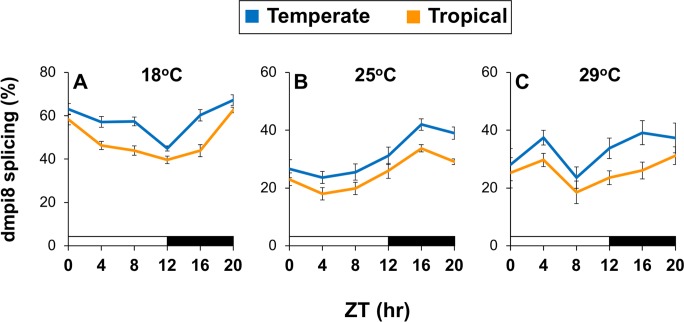Fig 4. Daily splicing efficiency of the dmpi8 intron is higher in temperate flies compared to tropical flies.
(A-C) Shown are group averages for the splicing efficiency of dmpi8 (expressed as the proportion of dper transcripts where the dmpi8 intron was spliced) throughout an LD cycle (where ZT0 is lights-on) for tropical and temperate flies. The 16 different lines of Australian flies were entrained for five days of LD at the indicated temperatures (top of panels), and flies from individual lines collected separately on the fifth day by freezing at the indicated times (ZT, hr). Extracts were prepared from isolated heads and dmpi8 splicing efficiency measured for each line separately, followed by pooling results from different lines to yield group averages for tropical and temperate populations. Fly lines used are as follows; tropical, HB22, HB25, HB27, HB106, HB108, GT46, GT92, GT110; temperate, S3, S4, S7, S8, S12, S22, S28, S34. For each temperature, the daily dmpi8 splicing curves were significantly different between the tropical and temperate populations (one-way ANOVA; 18°C, p = 1.3 x10-5; 25°C, p = 0.0021; 29°C, p = 6.8 x 10−4). Similar results were obtained in two independent experiments and a representative example is shown.

